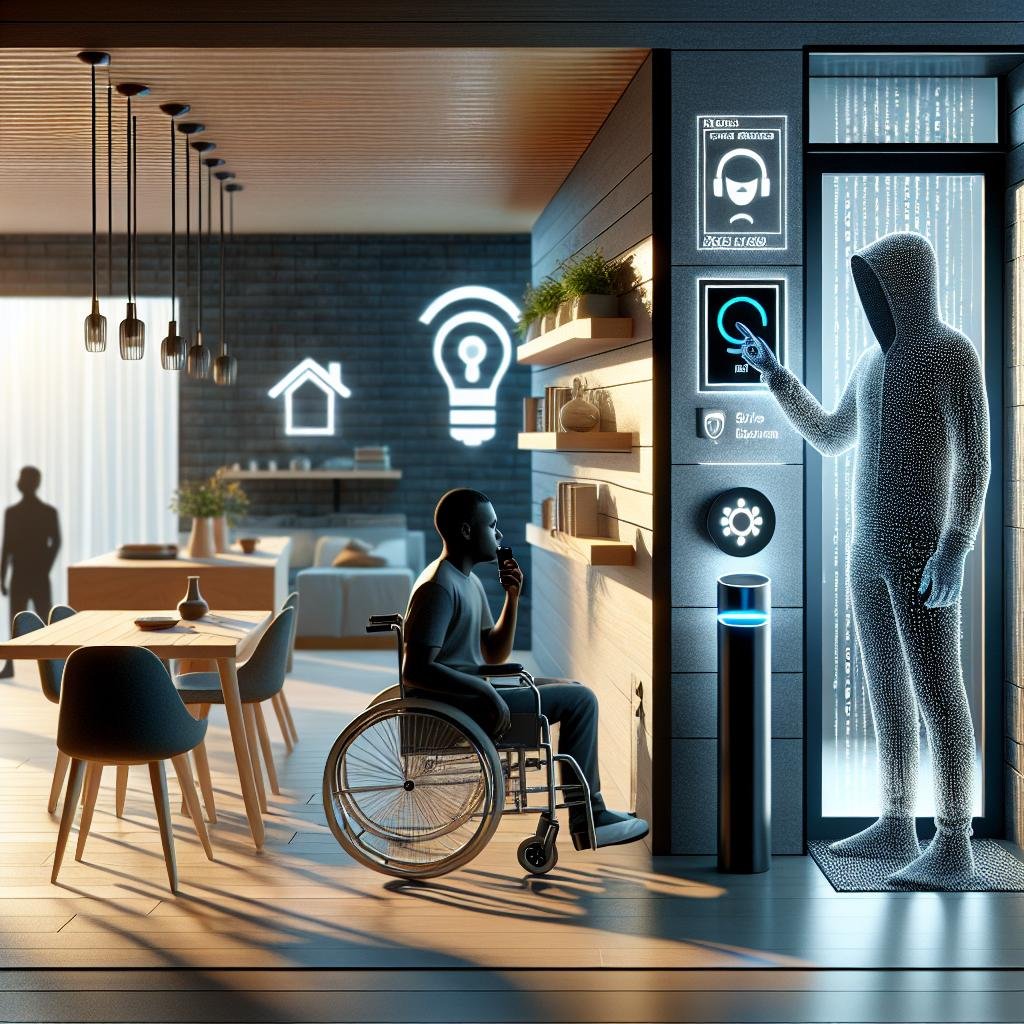
The Rise of Smart Homes and Accessibility
Smart homes are revolutionizing the way people live by offering unparalleled convenience and automation. From voice-activated lighting to security systems that can be controlled remotely, these innovations are making daily tasks easier for everyone.
For individuals with disabilities, smart home technology can be life-changing by providing greater independence through automation. However, while these advancements offer numerous benefits, they also come with potential risks that homeowners should consider.
- Bis zu 2500 sq. Füße für bis zu 25 Geräte
- Schnelle AX5400 Gigabit-Geschwindigkeit mit WiFi 6-Technologie für unterbrechungsfreies Streaming, HD-Videospiele und We…
- Es verbindet sich mit Ihrem vorhandenen Kabelmodem und ersetzt Ihren WLAN-Router. Kompatibel mit jedem Internetdienstanb…
How Smart Homes Improve Accessibility
Empowering Individuals with Disabilities
One of the most significant advantages of smart home devices is their ability to assist people who have mobility or cognitive challenges. Voice-controlled assistants like Amazon Alexa or Google Assistant allow users to control appliances, lights, and even door locks without needing physical access.
Benefits include:
- Voice and motion control: Hands-free operation helps those with mobility impairments manage their home effortlessly.
- Remote monitoring: Caregivers can keep an eye on loved ones through smart security cameras and sensors.
- Custom automation: Smart thermostats and lighting systems can be preset to adjust automatically, catering to individual preferences.
Real-Life Example: Smart Speakers Enhancing Daily Living
Consider a person with limited mobility who struggles to turn on lights or adjust the thermostat manually. A smart speaker integrated with voice commands allows them to control their environment simply by speaking, promoting greater independence and a better quality of life.
The Hidden Risks of Smart Home Technology
While the benefits of smart homes are undeniable, users should also be aware of potential challenges, particularly related to security and usability.
Cybersecurity Threats
As smart homes rely on internet-connected devices, they become prime targets for cyber threats. If security settings are not properly configured, hackers can gain access to personal data or even remotely control devices.
Common risks include:
- Unauthorized access: Weak passwords and lack of encryption can allow cybercriminals to infiltrate smart home networks.
- Data privacy concerns: Many smart devices collect user data, and without proper safeguards, this information could be misused.
- Device vulnerabilities: Outdated software can leave smart home systems prone to hacking.
Technology Can Be Overwhelming
For some users, particularly seniors or those unfamiliar with technology, the complexity of setting up and managing smart home systems can be a challenge.
To overcome this, homeowners should:
- Choose user-friendly devices with intuitive mobile apps.
- Seek professional installation or setup assistance if needed.
- Regularly update firmware to protect against emerging security risks.
Power and Connectivity Issues
Most smart home devices rely on electricity and internet connectivity to function. Power outages or network failures can render critical systems like smart locks and security cameras inoperable.
To mitigate these risks:
- Invest in backup power solutions like uninterruptible power supplies (UPS) for essential devices.
- Use smart hubs that allow offline mode whenever possible.
- 【Five Gigabit Ports】1 Gigabit WAN Port + 2 Gigabit WAN/LAN Ports +2 Gigabit LAN Port. Up to 3 WAN ports optimize bandwid…
- 【One USB WAN Port】Mobile broadband via 4G/3G modem is supported for WAN backup by connecting to the USB port. For comple…
- 【Abundant Security Features】Advanced firewall policies, DoS defense, IP/MAC/URL filtering, speed test and more security …
Balancing Convenience and Security in Smart Homes
The key to maximizing smart home benefits while minimizing risks is finding the right balance between automation and security.
Best Practices for a Safe Smart Home
Follow these practical steps to enhance the safety of your smart home:
- Use strong, unique passwords for every device and enable two-factor authentication whenever possible.
- Regularly perform software updates to fix security vulnerabilities.
- Enable network segmentation, keeping smart home devices on a separate Wi-Fi network from personal computers and smartphones.
- Limit data sharing and review privacy settings on all smart devices.
Final Thoughts: Are Smart Homes Truly Safe?
Smart home technology provides remarkable benefits, particularly for those with accessibility needs. However, as with any innovation, it comes with security concerns that homeowners must address.
By implementing smart security practices, choosing reliable brands, and staying informed about cyber risks, users can enjoy the comfort and efficiency of a smart home without compromising their safety.
Looking to upgrade your home with the latest smart gadgets? Explore our Smart Home Guides to find the best devices for secure and seamless automation!


